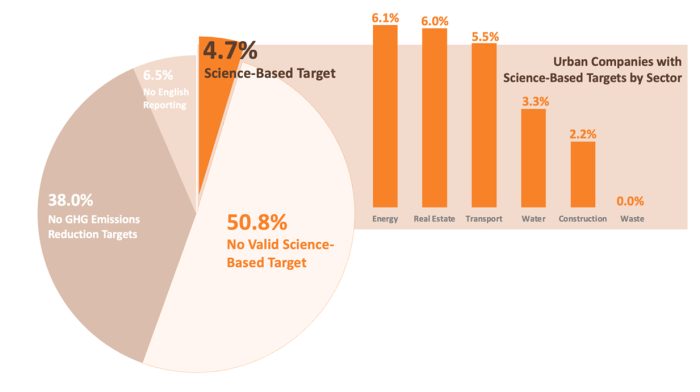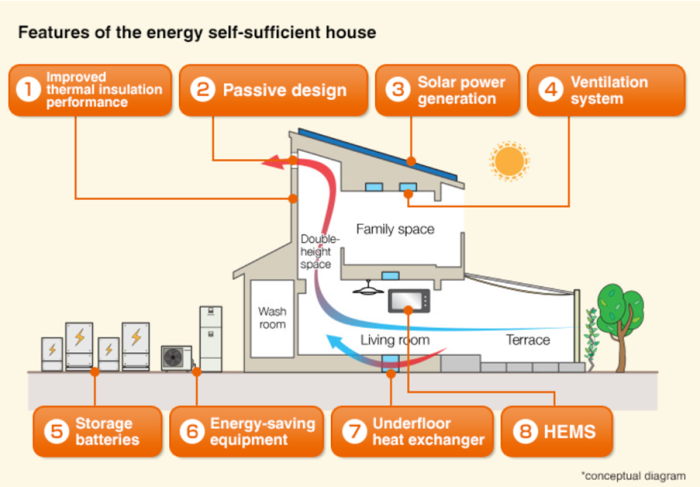Key finding
With fewer than 6% of urban companies having set science-based targets to lower greenhouse gas emissions, cities’ net-zero goals are at risk
Fewer than 6% of urban companies have science-based emissions targets, which puts cities’ net-zero goals at risk
Authors: Tsai-Hung Lin and Besmira Dyca
Since cities are responsible for 75% of global energy-related greenhouse gas (GHG) emissions (GHG Protocol, 2021). Local constituents are increasingly looking to municipal leaders and key urban stakeholders to take the lead in driving down emissions and delivering impactful climate action, especially with current Nationally Determined Contributions (NDCs) falling short of aligning with the 1.5°C trajectory and several national governments even reversing previous climate commitments.
Initiatives like the Climate Mayors, a climate policy network of US mayors (DeConcini, Rennicks, & Hyman , 2024), and the Covenant of Mayors for Climate and Energy (Global Covenant of Mayors, 2025), which have pledged to reduce emissions and invest in green infrastructure showcase the potential of local authorities in leading decarbonisation efforts independent of national, federal or global policy changes.
Overall, 368 cities have already publicly announced GHG emissions reduction targets, and 308 of them align their targets with the 1.5°C trajectory (CDP, 2023). With 25 megacities accounting for 52% of urban GHG emissions, their role in driving climate action is critical (Burgelman, 2021). Yet, local authorities directly control only a small share of these emissions — just 2% to 5% on average in the UK, for instance (Local Government Association, 2021). Further, the sectors in which urban companies operate are major GHG emitters. Real estate and construction accounts for 30% of global final energy consumption and 26% of energy-related emissions, and the energy sector is responsible for approximately three-quarters of current global GHG emissions. In stark contrast, the emissions reduction performance of the biggest real estate, construction, transport and utility companies in the 2024 Urban Benchmark is strikingly disappointing. Only 9.8% consistently reduced their Scope 1 and 2 emissions, and just 5.7% achieved consistent reductions in Scope 3 emissions. To make meaningful progress, local authorities must be empowered to regulate, engage and partner with the private sector, especially large-scale real estate, transport and urban service providers to ensure significant and sustained reductions in emissions.
High emissions, low reporting and ambition
Over 70% of leading companies have adopted GRI Standards (GRI, 2024), and more than 20 jurisdictions, representing nearly 55% of global GDP, are set to implement ISSB standards (IFRS, 2024). Despite the widespread adoption of these frameworks, true transparency in GHG disclosure remains limited.
A window of opportunity, if acted on now
While the overall performance falls short of expectations, there are promising practices that can lead to real progress. Unibail-Rodamco-Westfield, one of the biggest retail real estate companies worldwide, adopts diverse approaches to advance its decarbonisation pathway. In addition to setting science-based targets, the company collaborates with municipalities on urban regeneration and retrofitting projects, including the mixed-use densification of existing assets.
Driving decarbonisation through local leadership
Local governments are stepping up on climate commitments, but they cannot do it alone. To meet ambitious GHG reduction goals, they must activate policy levers that push the private sector to follow suit. Public procurement is one such lever. In Taiwan, for example, private firms involved in public building projects are now required to calculate and report carbon emissions data during the construction, repair and demolition phases (PCC, 2022).
Bibliography
Burgelman, S. (2021, July 23). 52% of the world’s greenhouse gas emissions come from just 25 cities. Retrieved from World Economic Forum: https://www.weforum.org/stories/2021/07/greenhouse-gas-emissions-mega-city-country/
Carrington, D. (2025, April 03). Climate crisis on track to destroy capitalism, warns top insurer. Retrieved from The Guardian: https://www.theguardian.com/environment/2025/apr/03/climate-crisis-on-track-to-destroy-capitalism-warns-allianz-insurer

